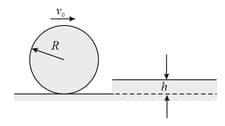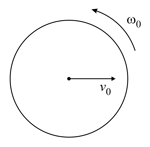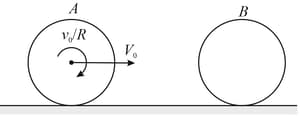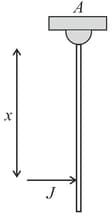A uniform solid sphere of radius is rolling without sliding on a horizontal surface with a velocity . It collides with an obstacle of height inelastically. Find the angular speed of the sphere just after the collision.



Important Questions on Rigid Body Dynamics II
A uniform sphere of radius is projected on a horizontal surface with a velocity and simultaneously given a spin Consequently, the sphere experiences a combined motion. Due to the friction between the sphere and the horizontal surface, both translational and rotational motion will stop simultaneously. Then, what must be the magnitude and direction of initial spin ?

A uniform solid sphere of radius is rolling without sliding on a horizontal surface with a velocity . It collides with an obstacle of height inelastically. Find the angular speed of the sphere just after the collision.

A hollow smooth uniform sphere of mass rolls without sliding on a smooth horizontal surface. It collides elastically and head-on with another stationary smooth solid sphereof the same mass and same radius. The ratio of kinetic energy of to that of just after the collision is:

A uniform rod of length is pivoted at point . It is struck by a horizontal force which delivers an impulse at a distance from point as shown in the figure. The impulse delivered by pivot is zero if is equal to,

